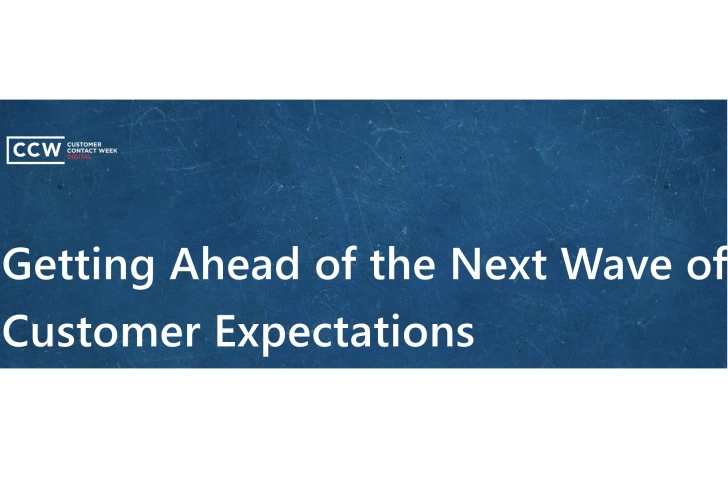Biden-Harris Administration Launches “Time is Money” Customer Service Improvement Initiative
Amid constant innovation in digital customer service tools, dissatisfied American customers have made their gripes clear, and the US government is taking action.
Add bookmark
On August 12, the Biden-Harris administration announced the rollout of “Time is Money,” an initiative mandating that corporations provide a more streamlined customer experience. The program targets seven specific customer service-adjacent hassles that Americans are faced with on a regular basis. The pain points that this initiative seeks to reduce are nothing new: customers dislike waiting on long holds, receiving complicated answers to simple questions, and engaging with ineffective chatbots. The overarching goals of this program directly address most of the top ten challenges that customers encounter when interacting with businesses today. Despite the shared goal of customer service excellence, this program frames the obstacles here as stubborn companies and ineffective technology.
Americans are tired of being played for suckers, and President Biden and Vice President Harris are committed to addressing the pain points they face in their everyday lives. The Administration is already cracking down on junk fees—those hidden costs and surcharges in everything from travel to banking services—that hit people in their pocketbooks. Now the Biden-Harris Administration is taking on the corporate practice of giving people the run around, wasting their precious time and money.
The goal of the initiative, which calls upon different government agencies to support and codify these plans into law, stems from the idea that customers’ time and money are needlessly being wasted by companies. However, in the customer service space, it is widely understood that businesses consistently compete on experience to win over customers. The notion that it is somehow more profitable for businesses to provide the minimum required customer service is untenable. It also doesn’t align with the customer-centric values organizations are currently striving for.
It is not surprising, however, that Americans are profoundly dissatisfied with the way things have been going, especially when looking at CCW Digital’s latest research. While American consumers are often justified in their cynicism and distrust of corporations, there is a fundamental disconnect between what many customers believe these companies are doing "behind the scenes" and what businesses are working to achieve. It is this lack of understanding that leads customers to believe they are being deceived in some way. In reality, companies are highly motivated to make experiences easier for customers, so it is disarming to see the oversimplification of the customer experience in the “Time is Money” press release.
These hassles don’t just happen by accident. Companies often deliberately design their business processes to be time-consuming or otherwise burdensome for consumers, in order to deter them from getting a rebate or refund they are due or canceling a subscription or membership they no longer want—all with the goal of maximizing profits.
The two sides of advancing technology
Our research shows that customers prefer interactions with businesses that are frictionless, efficient, and require as little effort from them as possible. Although many brands still seek to create memorable, delightful moments for their customers, the smoothness of the experience remains the priority in many cases.
Many customers consciously or unconsciously believe that the smoothest possible experience requires person-to-person interaction. Customers inherently perceive chatbots and IVRs are worse than live agents, and “Time is Money” holds person-to-person interaction as the gold standard of easy and efficient service. Still, this framing does not represent customer sentiment. Customers are very open to seamless, around-the-clock customer service as a concept. The majority of customers are even willing to try self-service for complex issues.
In reality, it is this drive for optimization that makes technology so useful in this space, yet so destructive when used incorrectly. In our 2024 CX Trends, Challenges, & Opportunities report, CCW Digital found that the number one customer service pain point was difficulty reaching a live agent. It is clear that even the most advanced, customizable technology can be a detriment if it is not adequately integrated, tested, and maintained. And it is these complicated and unreliable outcomes that change the customer’s perspective on innovation when it ultimately fails. When tools are implemented ineffectively, it makes the technology seem like more of a hassle than a true value-add. And by reinforcing the idea that these technologies are not veritable substitutes for human interaction, programs like “Time is Money” delay their advancement.
This new initiative seems to point at the fact that these points of friction are largely intentional; companies are deliberately forcing customers to jump through hoops only to achieve suboptimal outcomes. While it is definitely a stretch to assume this would be a productive practice for the business, it’s an even farther stretch to claim that this practice is somehow increasing profits.
Organizations might still be working through the kinks of new technology, but the data still points to the fact that companies are not just trying to fail.
Why now?
Many competing business outcomes led to the state of customer service today, but none is more prominent than the acceleration and advancement of technology. With years of well-documented technological growth in the CX space now behind us, we wonder what makes this moment the time for the government to intervene. Could the rise of AI and a growing distrust of digital-first experiences be the culprit?
The ongoing transition to digital-first customer service has posed many challenges for Americans. Interestingly, this transition has largely been established at the federal level. The executive branch is almost three years into a Federal Customer Experience program that is meant to “rebuild trust in the government.” Legislative actions, like the 2018 IDEA Act, have set forth new digital-first standards for the government. Policies like, “Agencies must modernize websites, digitize services and forms, accelerate use of e-signatures, and adopt shared standards and services” have forced organizations to lead with digital strategies when they may not have been prepared for implementation. Even with a strong justification for these actions, extending such significant directives to the private sector mark a shift in how the US government seeks to evaluate customer service.
Examining “Time is Money”
We dove into three sections of the mandate that are most relevant to our work in the customer experience space to provide context, questions, and some recommendations on how we would make this program more pragmatic.
At a high level, this program is well-intended but unlikely to be implemented at scale. Rather than resisting the flow of innovation with more red tape, the US government can support the development of an unbranded framework for adopting AI and other advanced tools. With the backing of a government agency, experts must come together to detail all of the steps companies need to take to organize their data, test new tools, and meet rising standards.
Here we offer a look at the key pillars of this initiative and break down what they mean for customer service leaders today:
“Cracking down on customer service doom loops”
- What it means: Within the realm of inefficient phone experiences, “doom loops” are defined as “being forced to listen to long messages before being permitted to speak to a live representative.” In response, the program will require companies to have a 1-button option for customers to immediately connect with a live agent.
- How it may impact companies: Many large companies already allow you to connect with a live agent, though not very seamlessly. While the push of a button is easier than repeatedly saying “representative” into the phone, this change is likely to disrupt all companies’ processes. Regardless of what stage of technology implementation companies are at, or how well it’s going, introducing this step may be disastrous for companies who have successfully begun to use automation for simple issues and agents for more complex ones. Even more significant will be the impact on hold times at the outset, while companies scramble to adjust their workforce management.
- Questions we have: Must all companies follow this same blanket rule? Could there be exceptions for corporations who have demonstrated a successful integration of automation and self-service? If the goal is an effortless customer experience, how can we be sure that speaking with a live agent will bring about that result?
Though it may seem frustrating for organizations that are sincerely looking to elevate self-service experiences (especially for those doing it to reduce customer effort), we have to accept that access to live agents is still important. In fact, customers say that providing the ability to easily escalate to a live agent would be one of the best ways to cultivate trust in digital channels. That said, accepting the endurance of live agent support does not have to come at the expense of elevating bot experiences. Here are a few key recommendations for striking this balance:

“Allowing you to submit health claims online”
- What it means: The fact sheet states, "Health coverage can be full of headaches and hassles, as many plans and insurance companies make it unnecessarily difficult to access information or send in claims." As part of this initiative, the Department of Health and Human Services (HHS) Secretary Becerra and Department of Labor (DOL) Acting Secretary Su penned an open letter to health insurance CEOs urging them to further digitize their claims process. The letter details specific ways insurance companies can make information more accessible, processes more simple, and service more supportive.
- How it may impact companies: Americans have limited choices when it comes to selecting their health insurance, so health insurance companies are not as incentivized to compete on the basis of customer service. In fact, health insurance companies and their parent organizations do not see users as their primary customers, and are not as financially beholden to them as is with other industries. This can mean that healthcare organizations are not driven to optimize and improve processes for customers, adding friction over the long-term. This initiative aims to solve this by implementing a more accessible and intuitive customer journey.
- Questions we have: Why is the government choosing to approach this issue by appealing to the CEOs rather than including this clause in legislation in a more enforceable way? How can we incentivize a more intuitive and human-centered healthcare experience?
The healthcare experience is unique, with so much red tape and regulation it can be difficult to innovate and improve at a moment's notice. Customers, however, expect exceptional experiences regardless of the circumstances. In fact, 63% of customers say they believe in the ‘Amazon’ effect — meaning they compare every experience they have with their best customer service interaction, no matter the industry. Here are a few tips for enhancing the healthcare experience:

“Taking on the limitations and shortcomings of customer service chatbots”
- What it means: We are well aware that chatbots are far from perfect, and that the issues they present customers with are the top customer service pain points in 2024. The White House presents “Time is Money” in partnership with the Consumer Financial Protection Bureau, noting, “The CFPB is planning to issue rules or guidance to crack down on ineffective and time-wasting chatbots used by banks and other financial institutions in lieu of customer service. The CFPB will identify when the use of automated chatbots or automated artificial intelligence voice recordings is unlawful, including in situations in which customers believe they are speaking with a human being.”
- How it may impact companies: Without clear direction on how these rules and further guidance will be enacted, it is difficult to anticipate the scope of the impact.
- Questions we have: How will the CFPB measure the usefulness or effectiveness of each company’s chatbot? Will the government work with chatbot vendors to provide guidance on the level of effectiveness they’re looking for? Is the onus on the company to ensure customers can differentiate between an automated tool and a human being?
Questions and ambiguities aside, there are some valid takeaways for businesses, particularly in high-stakes, regulated industries:

Image by Aaron Kittredge on Pexels.





















